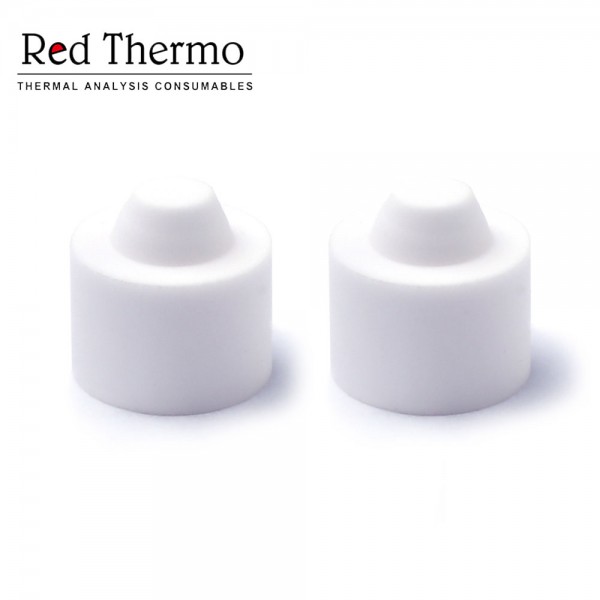Your cart is empty.
shop now
Your cart is empty.
shop now
The use of high-quality crucibles in DSC analysis can provide numerous benefits that enhance the accuracy, reliability, and reproducibility of polymer analysis. Some of the key advantages of using well-designed crucibles include:
1. Improved data quality: High-quality crucibles are engineered to minimize the impact of factors like heat capacity, thermal conductivity, and sample-crucible interactions on the DSC measurements. This results in cleaner, more accurate DSC curves that faithfully represent the thermal behavior of the polymer sample, leading to more reliable interpretations and conclusions.
2. Enhanced sensitivity and resolution: Crucibles with optimized design and materials can improve the sensitivity and resolution of DSC measurements, allowing researchers to detect and analyze subtle thermal events or transitions that may be obscured by low-quality crucibles. This enhanced sensitivity is particularly important when working with small sample sizes or analyzing complex polymer systems.
3. Increased reproducibility: Consistent and reliable crucible performance is crucial for obtaining reproducible DSC results, especially when comparing data across different experiments, samples, or laboratories. High-quality crucibles with tight manufacturing tolerances and consistent material properties help to ensure that any observed differences in DSC data are due to the polymer sample itself, rather than variations in the crucible.
4. Expanded temperature range: Specialized crucible materials and designs can extend the usable temperature range of DSC experiments, allowing researchers to analyze polymers across a wider temperature span. This is particularly important for studying the thermal behavior of high-performance or engineering polymers that may undergo transformations at elevated temperatures.
5. Improved sample containment: Crucibles with robust sealing mechanisms or specialized coatings can better contain the polymer sample during heating, preventing sample loss, contamination, or unwanted interactions with the crucible material. This is essential for accurate DSC analysis, especially when working with volatile or reactive polymer samples.

By leveraging the benefits of high-quality crucibles, polymer researchers and analysts can enhance the efficiency, reliability, and overall value of their DSC experiments, leading to more insightful and actionable data that drive product development, quality control, and materials optimization.
When selecting a crucible for DSC analysis of polymers, there are several key factors to consider to ensure optimal performance and reliable results. These factors include:
1. Material composition: The choice of crucible material can significantly impact the thermal behavior and interaction with the polymer sample. Common materials used for DSC crucibles include aluminum, stainless steel, platinum, and ceramic. Each material has its own thermal properties, chemical compatibility, and suitability for different types of polymer samples.
2. Crucible size and geometry: The size and shape of the crucible can affect factors like sample volume, heat transfer, and the overall thermal response of the system. Researchers should select a crucible size that is appropriate for the amount of polymer sample being analyzed, ensuring efficient heat transfer and accurate measurements.
3. Sealing mechanism: For polymers that undergo volatile reactions or significant volume changes during heating, the sealing mechanism of the crucible becomes crucial. Hermetically sealed or perforated crucibles can provide better containment and control of the sample environment, leading to more reliable DSC data.
4. Surface characteristics: The surface properties of the crucible, such as roughness, coatings, or surface treatments, can influence the interaction between the polymer sample and the crucible. This, in turn, can affect factors like sample adhesion, heat transfer, and the potential for chemical reactions or contamination.
5. Temperature range: The operating temperature range of the crucible should be compatible with the expected thermal behavior of the polymer sample. Some crucible materials, such as quartz or platinum, can withstand higher temperatures, making them suitable for analyzing high-performance polymers or those with high thermal stability.
6. Reusability and durability: Depending on the application and budget, the reusability and durability of the crucibles may be important factors. Some crucibles are designed for single-use, while others can be cleaned and reused multiple times, offering cost-effective solutions for routine polymer analysis.
By carefully considering these factors and selecting the appropriate crucible for the specific polymer sample and experimental conditions, researchers can optimize the performance of their DSC analysis, leading to more accurate, reliable, and insightful data.
As we have explored in this article, the choice of crucible can make a profound difference in the accuracy, reliability, and reproducibility of DSC measurements. From open crucibles to hermetically sealed options, each type of crucible offers unique advantages and caters to the specific needs of polymer samples and research objectives.